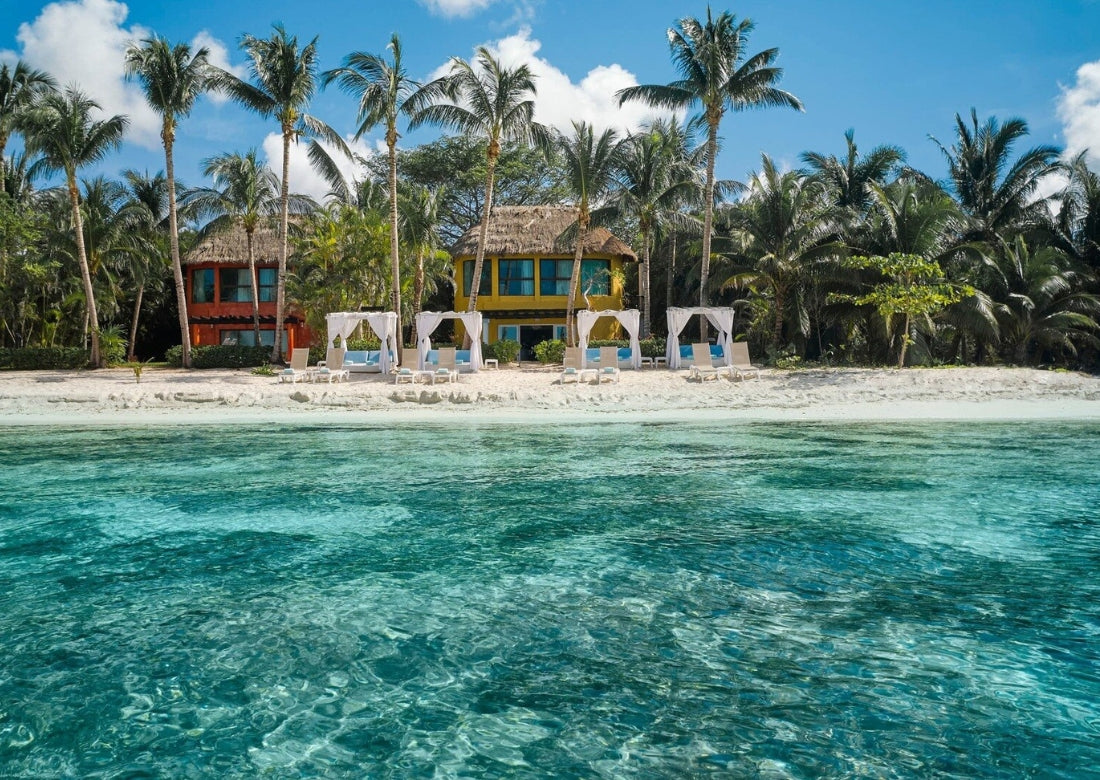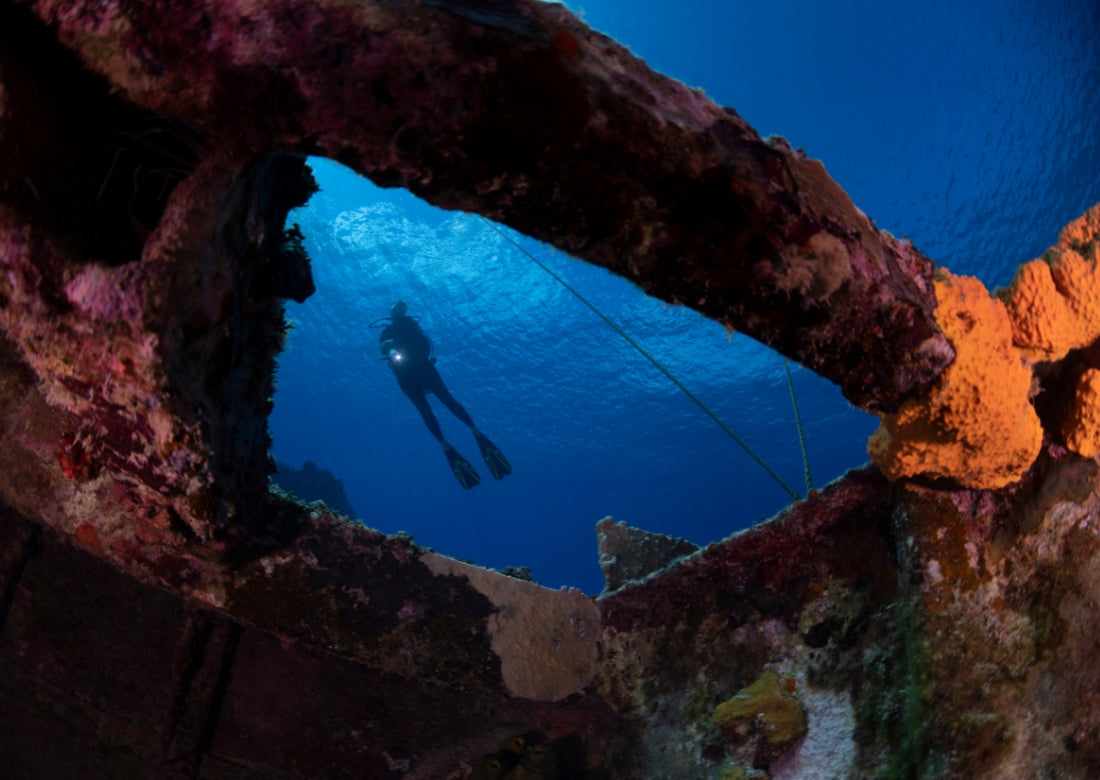Diving With Sharks - Top 5 Destinations

Swimming with sharks is a heart-pounding adventure and a bucket-list experience for many divers. If you are one of them, be sure to add these five amazing destinations to your must-dive list for the best shark encounters in the world.
Cocos Island, Costa Rica
Situated some 300 miles (550 kilometers) off the Costa Rican mainland, Cocos Island is a UNESCO World Heritage site and one of the top diving destinations on the planet. Ocean currents attract literally hundreds of scalloped hammerheads and Caribbean reef sharks. White tips, bull sharks, whale sharks and mantas are also frequently spotted in this area.
Some of the best dive sites to visit around Cocos Island are Dirty Rock, Manuelita, and Submerged Rock, but the sharkiest one of them all is Bajo Alcyone. This seamount rises to 82 feet (25 meters) and attracts dozens of hammerhead sharks. All you have to do is dive to the top of the mount, find a crevice to wedge into and watch the hammerheads gently gliding into the picture until they fill your entire field of vision! If you can tear your attention away from the shark action, be sure to check out the reef itself. It’s home to many octopuses, eels, marble rays, eagle rays, sea turtles and whirling schools of jacks.
Keep in mind, Cocos Island is a liveaboard destination, and the trips should usually be booked far in advance. Depending on conditions at sea, the boat trip from the Costa Rican mainland usually takes about 36 hours cruise time.
Type of Diving: Liveaboard, Seamount, Deep Diving
Recommended Level: Advanced
Featured Shark: Scalloped Hammerhead
When to Go: June to November is the best time for huge schools of hammerhead sharks. December to May is recommended if you prefer calmer seas and better visibility.
Water Temperature: 75 to 82 F (24 to 28 C) with little seasonal variation, though colder thermoclines are common.
Visibility: 40 - 98ft (12 - 30m)
The Galapagos Islands, Ecuador
The Galapagos Islands is one of three destinations that make up the “Shark Triangle.” The other two are Cocos Island, which we’ve mentioned before, and Malpelo, a small barren island in the East Paciffic Ocean.
The Galapagos is home to a huge variety of marine life. Most famous for shark encounters are iconic Wolf and Darwin islands, accessible only via liveaboard. These remote, uninhabited islands offer the chance to dive with large groups of silky sharks, hammerheads, Galapagos sharks, mantas, whale sharks and more. Another well-known shark diving mecca is Gordon Rocks, an eroded crater near Santa Cruz Island. Strong currents attract dozens of hammerheads into a confined area, where divers can safely get fairly close to the sharks. Due to challenging currents and upwellings, however, all three of these sites are only suitable for intermediate and advanced divers with a minimum of 50 logged dives.
Those, who want to spot the sharks in easier conditions, can visit Punta Carrion, another dive site near Santa Cruz. Here, most of the action is between 40 and 60 feet (12 to 18 m), allowing divers plenty of bottom time to enjoy a variety of sharks as well as mobula rays, sea lions and other marine life.
Type of Diving: Drift Diving
Recommended Level: Advanced
Featured Shark: Scalloped Hammerhead, Silky Shark, Galapagos Shark
When to Go: The warm season of January to May is a great time of year to see lots of Galapagos sharks and silky sharks, though you can also see them in fewer numbers during the cooler season of June to December.
Water Temperature: 60 to 77 F (16 to 25 C)
Visibility: 30 - 70ft (10 - 21m).
Tiger Beach, The Bahamas
The Bahamas, a nation of 700 gorgeous islands, is a true divers’ paradise that offers virtually every kind of diving adventure out there - from vibrant walls and reefs to fascinating shipwrecks and caves. The destination is also well-renowned for big animal encouters, and shark dives in particular. There are a number of dive sites, where you can swim with reef sharks, hammerheads, bull sharks, and oceanic whitetips. But one of the best sites for shark diving enthusiasts is Tiger Beach. The place is known for its healty population of tiger sharks and crystal-clear, warm water. There’s almost no current, and the site is relatively shallow, sandy, and easy to dive, which makes it possible to focus on the sharks themselves. Although tiger sharks are undisputed stars here, the area supports a variety of ther shark species including the Caribbean reefs, lemons and occasional hammerheads.
You have a few choices in operators when you are planning a trip to Tiger Beach. It was traditionally done via liveaboard, but land-based operations are now common as well and are based out of West End. The boat trip from the Grand Bahama Island is about an hour long.
Type of Diving: Sandy Bottom, Shallow Dives
Recommended Level: Beginner (some operators ask for at least 30 logged dives, though some require even less experience)
Featured Shark: Tiger Shark
When to Go: The tiger sharks are here all year, though October to January is the best time for the most sharks.
Water Temperature: 77 to 86 F (25 to 30 C)
Visibility: 50 - 98ft (15 - 30m) on average, but divers often can expect visibility beyond 150 ft (45m)
Placencia, Belize
If you’re looking for sharks that are a little less fierce and a little more gentle, visit Placencia, Belize for a unique opportunity to dive with whale sharks. Gladden Spit, the most famous and perhaps most exciting dive site near Placencia, is known for encounters with these giants, who are attracted to the area for the delicious fish eggs produced by spawning snappers. The best chance of seeing a whale shark during a dive occurs a few days before the full moon to ten days after it, so plan your journey accordingly. Keep in mond though, whale shark diving in Placenia is highly regulated. Boats are often limited to one and a half hours in the area and sometimes interaction may be limited to snorkeling only.
Aside from whale sharks, you will be able to spot turtles, rays, pelagic fish, eels and reef sharks among the huge soft and hard corals. The inner half of the reef is the perfect place for beginners, since it has excellent visibility and no current. The outer reef is reserved for more advanced divers with deep diving and steep walls dropping off to infinity.
Type of Diving: Open Ocean, Snorkeling
Recommended Level: Beginner, Intermediate
Featured Shark: Whale Shark
When to Go: March to June
Water Temperature: 75 to 80 F (24 to 27 C)
Visibility: 98 - 150ft (30 - 45m)
Rhode Island, United States
If you want a slightly different experience, visit Rhode Island for some of the world’s best blue and mako shark diving. Because both of these species of sharks are pelagic animals that live and hunt in the endless open ocean, it's fairly uncommon for divers to see them. Numerous shark-diving operators depart from southern New England harbors in search of these sleek predators, and often drift with the current over deep water for up to four hours before making the long return to shore. Most of these expeditions are open-water encounters that don't involve scuba. Participants simply snorkel of freedive with the animals.
The trips are geared toward photographers and videographers. Blue sharks, sometimes arriving in packs of four to eight, typically show a high level of interest in divers and come extremely close. So, those who don't have large cameras should carry a shark stick to create a barrier for the animal to respect. Makos are rarer; they usually come alone, and the slightest disturbance can cause them to swim away. If a mako shows up, it's best to keep quiet and allow the shark to develop some confidence and decide to stay around.
While blue and mako shark encounters are the goal of these expeditions, nothing is guaranteed. You never know what you might come across while out at sea. Other possible sightings include dolphins, humpback whales, basking sharks, ocean sunfish, smooth hammerheads, minke whales and more.
Type of Diving: Freediving, Snorkeling
Recommended Level: All experience levels
Featured Shark: Blue Shark, Mako Shark
When to Go: June to September
Water Temperature: 60 to 70 F (15 to 21 C)
Visibility: 40 - 80ft (15 - 25m)
Wherever you choose to dive, remember, sharks should be treated with respect and a healthy dose of caution. While their fearsome reputation is often massively blown out of proportion, sharks are still big predators, so there are a few rules you should follow to make the encounter safe and comfortable for both you and the animal. This is not a comprehensive list, but to start off:
1. Dive with a reputable, experienced company that implements all the necessary safety measures needed to conduct safe shark dives.
2. Research the information on how to behave around a particular species of sharks you plan to encounter, as the acceptable procedure for one species might be totally inappropriate with another.
3. Because sharks are dynamic swimmers, you need to have strong situational awareness. Pay close attention to everything around you - the sharks, the boat, the current, the other divers, your instructor. Be ready when it’s time to get out of the water




